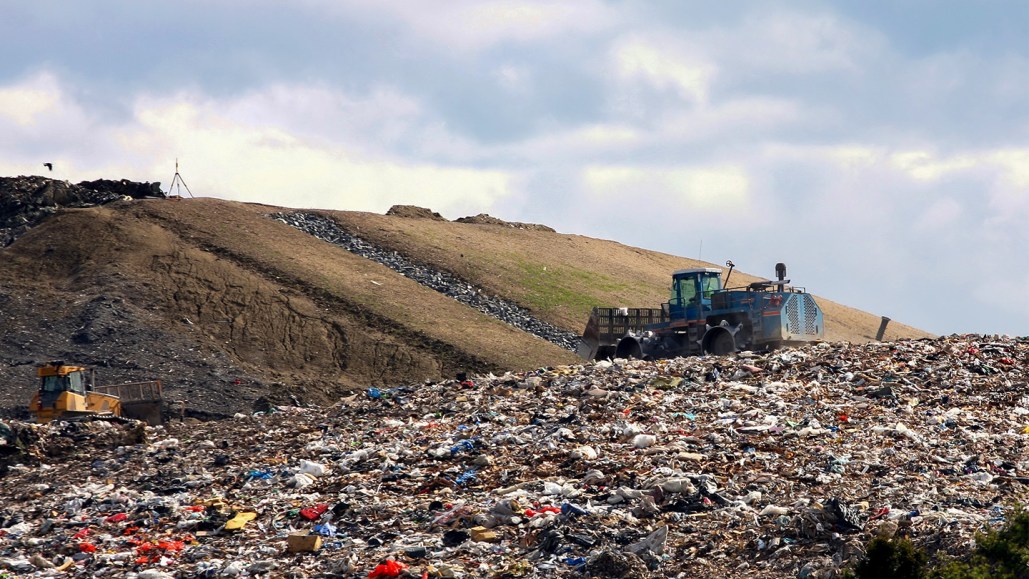Landfills Emit Toxic 'Forever Chemicals' into the Atmosphere

What’s dumped into a landfill is supposed to stay there, but a new study finds that toxic “forever chemicals” are wafting from the waste into the air.
Per- and polyfluoroalkyl substances, or PFAS, have been detected in the gas exuded by some Florida landfills in quantities comparable to or even greater than in the liquids that seep from the waste, researchers report June 26 in Environmental Science & Technology Letters. These chemicals have been linked to cancer, weakened immune systems, developmental problems in children and a tide of other harmful health effects (SN: 6/15/21).
The discrepancy between landfill liquid and gas is significant because compared with the systems that collect runoff, or leachate, the systems that collect gas “are nowhere near as efficient,” says environmental engineer Ashley Lin of the University of Florida in Gainesville. Moreover, the portion of gas that is captured onsite is not typically treated in ways intended to destroy PFAS, she says. “The real concern is with how we manage this really concentrated gas that we’re pulling off.”
PFAS molecules contain resilient links of carbon and fluorine atoms, which contribute to their resistance to heat, grease and water resistance as well as to their widespread use in consumer products such as raincoats, cosmetics and nonstick cookware. But those bonds also cause PFAS to linger in the environment, with some forms taking more than 1,000 years to degrade.
Unsurprisingly, researchers have found that these forever chemicals gather within most if not all U.S. landfills and their leachates. For instance, a 2023 EPA report indicated that leachates from more than 95 percent of 200 landfills across the country contained PFAS, identifying 63 different types of PFAS across the sites. But few studies have investigated what types and quantities of PFAS are escaping into landfill gas.
For the new study, Lin and her colleagues sampled and analyzed gas from three municipal solid waste sites. Of the 27 types of PFAS they checked for, 13 were detected, with combined concentrations of up to 210 to 940 parts per trillion. A single class of PFAS that typically exists in the gas state, called fluorotelomer alcohols, dominated the PFAS in the samples, reaching concentrations that were somewhat comparable to those in fumes from soil near a PFAS manufacturing facility, the researchers note.
The team also sampled leachate from each landfill. But since those samples harbored different types of PFAS than the gas, the researchers compared how much of a common PFAS building block — fluorine — the leachate and gas samples contained. They found that comparable amounts of fluorine from PFAS were being released from the waste into leachate and gas, and at one site roughly three times as much was escaping into the gas.
A landfill’s location, the time of year and different detection methods can all affect how much PFAS is found in gas and leachate samples, says environmental chemist Florentino De la Cruz, who was not involved with the study. More data will be necessary to complete the picture nationwide, and a national sampling campaign funded by the U.S. Environmental Protection Agency is currently underway, says De la Cruz, of the University of North Florida in Jacksonville.
But it’s clear that landfill gas carries forever chemicals, he adds. “That is no longer debatable.”
Lin says that questions also remain regarding the fate of the emitted PFAS. Captured landfill gas is often burned off in the flames of beaconlike gas flares, but it remains unknown whether that process destroys PFAS.
As for PFAS-laden gas that escapes a landfill, “you’ve got an air release that gets diluted really, really fast,” says civil and environmental engineer Morton Barlaz. “I think the levels are so low that it’s not likely to be causing a [health] impact.” Still, he says, it’s too early to say for sure.
Research shows that household products can also release PFAS that concentrate within indoor dust, says Barlaz, of North Carolina State University in Raleigh. “If I think about a house a half mile, a mile from a landfill, I’m more worried about dust and whether they have old carpet and old couches that were treated with PFAS,” he says. “My goodness, that’s in their house.”




